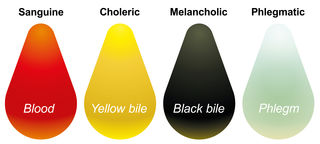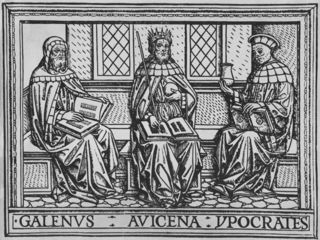Personality
Early History of Isolated, Withdrawn, Detached Individuals
Schizoidness in antiquity.
Posted October 20, 2019 Reviewed by Gary Drevitch
As noted by the well-known historian of psychiatry G.E. Berrios (1993), the behaviors described by current personality disorder (PD) categories have been identified and described throughout the course of history. (See Bornstein, [2006], Coolidge & Segal [1998], and Millon [1981] for similar discussions.) Accordingly, there have always been withdrawn, detached, and isolated individuals, but the theories and terminology used to explain them have changed over time.
Antiquity
In the early history of personality classification, temperament and character were distinct entities, with temperament closely associated with the medical model, and character associated with philosophy and literature (Millon 1981; Roback, 1928). Aristotle (trans. 1897, trans. 1912), Theophrastus (trans. 2004), Epictetus (trans. 1877), and later La Bruyere (as cited in Roback, 1928), among others, identified and described isolated, detached, and withdrawn individuals in literature and philosophy, or what has been called “literary characterology” (see Lombardo & Foschi, 2002; Millon, 1981; Roback, 1928; for overviews of this perspective).
Literature and Philosophy
This genre provided brief narrative/story-like vignettes intended to highlight the prototypical features of various character types (Millon, 1981; Roback, 1928). For instance, Theophrastus (trans. 2004, p. 109) identified withdrawn, detached, and isolated individuals as self-centered in his well-known book, Characters. Theophrastus emphasized their dismissing attitude as well as an unwillingness to socialize or engage in recreational activity.
Aristotle (trans. 1897, trans. 1912) described isolated individuals as unnatural, animal-like, and incapable of experiencing joy, perhaps foreshadowing some later conceptualizations of schizoid individuals as pathological, primitive, and anhedonic (e.g., see McWilliams, 2004, for a related discussion and counterview). In addition, Aristotle (trans. 1912) conceptualized human nature as consisting of both a sociable and a reclusive side, with the solitary side linked with unhappiness and immorality.
Epictetus (trans. 1877) provided a description of solitary individuals that went beyond surface behaviors and morality-based judgments common to literary characterology (see Roback [1928] and Millon [1981] for similar discussions). For instance, Epictetus (trans. 1877) differentiated solitariness as a subjective experience connected with loneliness from the adaptive capacity to be solitary, which is similar to Winnicott’s (1958) later psychoanalytic view of the capacity to be alone. In Epictetus’s (trans. 1877) work, there is a conceptualization of solitariness which highlights the various ways in which ostensibly socially isolated individuals may experience being alone, something that forecasts contemporary psychoanalytic approaches which emphasize the description of the subjective experience of isolated, detached, and withdrawn individuals (e.g., Martens, 2010; McWilliams, 1994, 2004; see Roback, 1928, for a discussion of the connection between literary characterology and psychoanalytic literature).
In sum, both Aristotle (trans. 1897, trans. 1912) and Epictetus (trans. 1877) emphasized the multidimensional nature in what has proven to be one of the most basic and enduring traits in personality psychology, namely the tendency toward being social versus asocial or what was later called the introversion-extraversion dimension by Hans Eysenck (for overviews, see Maher & Maher, 1994; Winter et al., 1998; see also Merenda, 1987).

Medical Model
In contrast to discussions of character in early Greek literature and philosophy, the medical model, derived from the work of Hippocrates (ca 460 BCE), emphasized the biological basis and categorical classification of disease (see Millon, 1981; Roback, 1928; and Stelmack & Stalikas, 1991, for reviews).
Hippocrates’ well-known theory of four “humors” (i.e., phlegm, yellow bile, black bile, and blood) was the primary theory of medicine during the Greco-Roman period (see Berrios, 1993; Coolidge & Segal, 1998; Maher & Maher, 1994; Millon, Millon, Grossman, Meag, & Ramnath, 2004; Tyrer, Coombs, Ibrahimi, Mathilakath, Bajaj, Ranger, Rao, & Din, 2007; and Veith, 1957, for overviews of the early humor/Hippocratic-model). In this theory, the humors were considered to be physical/somatic-based constructs—substances or fluids—that purportedly existed at different levels of strength in different individuals. Tyrer et al. (2007) reported that following Hippocrates’s work, Galen—during the 2nd century ACE—identified four separate personality styles or temperaments associated with heightened levels of each of the four humors (see Lester, 1990; Merenda, 1987; and Millon, 1981, for similar discussions; see also Coolidge & Segal, 1998; Maher & Maher, 1990; Veith, 1957; and Millon et al., 2004).

Extant literature has credited the “Hippocratic-Galen theory” for describing the “phlegmatic temperament” as characterized by indifference and apathy, traits now conceptualized as DSM-IV schizoid PD characteristics (see Stelmack & Stalikas, 1991; Lester, 1990; Merenda, 1987; Millon, 1981; Millon et al., 2004; Tyrer et al., 2007; cf. DSM-IV APA, 1990). For example, according to recent work by Tyrer et al. (2007), the phlegmatic temperament was re-labeled as schizoid, inhibition, introverted, asocial, and cluster A by various recent researchers, all referring to essentially the same phenomena (i.e., withdrawn, detached, and isolated individuals).
Contrary to this popular view, Stelmack and Stalikas (1991) showed that Hippocrates’s theory of humors did not make any reference to personality, and Galen’s temperament types only referred to personality factors tangentially without any reference to a phlegmatic (schizoid) personality construct. However, the language used to label the humors was linked with certain physical properties (e.g., phlegm was linked with coldness, Stelmack & Stalikas, 1991; for overviews, see also Coolidge & Segal, 1998; Veith, 1957) that connote personality characteristics associated with schizoid PD (cf. DSM-IV, APA, 1990).
References
Berrios, G.E. (1993). European views on personality disorders: A conceptual history. Comprehensive Psychiatry, 34 (1), 14 - 30.
Bornstein, R.F. (2006). A Freudian construct lost and reclaimed: The psychodynamics of personality pathology. Psychoanalytic Psychology, 23 (2), 339 - 353.
Coolidge, F.L. & Segal, D.L. (1998). Evolution of personality disorder diagnosis in the DSM. Clinical Psychology Review, 18 (5), 585 - 599.
Millon, T. (1981). Disorders of personality: DSM-III: Axis, II. New York: Wiley Interscience.
Roback, A.G. (1928). The psychology of character: With a survey of temperament. New York: Hartcourt, Brass, & Company Inc.
Epictectus (1877). The Discourse of Epictetus (G. Long, Trans.). London: Bell George & Sons.
Aritstotle (1912). The Nichomachean Ethics of Aristotle (J.E.C. Weldon, trans.). London: Macmillon & Co.
Aristotle (1897). Aristotle's History of Animals in Ten Books (R. Cresswell, trans.). London: George Bell & Sons.
Lombardo, G.P. & Foschi, F. (2002). The European origins of "personality disorder." European Psychologist, 7 (2), 134 - 145.
McWilliams, N. (2004). Some thoughts about schizoid dynamics. Psychoanalytic Review, 93 (1), 1 - 24.
American Psychiatric Association (1994). Diagnostic and statistical manual of mental disorders. (4th edition). Washington DC: Author.
Lester, D. (1990). Galen's four temperaments and four-factor theories of personality: A comment on "toward a four-factor theory of temperament and/or personality." Journal of Personality Assessment, 54 (1, 2), 423 - 426.
Merenda, P.F. (1987). Toward a four-factor theory of temperament and/or personality. Journal of Personality Assessment, 51 (3), 367 - 374.
Millon, T., Millon, C.M., & Grossman, S. et al. (2004). Personality disorders in modern life. Hoboken, NJ: John WIley & Sons.
Tyrer, P., Coombs, N., & Ibrahimi, F. et al. (2007). Critical developments in the assessment of personality disorder. British Journal of Psychiatry, 190 (suppl. 49), s51 - s59.
Veith, I. (1957). Psychiatric nosology: From Hippocrates to Kraepelin. American Journal of Psychiatry, 385 - 391.
Theophrastus (2004). Characters (J. Diggle, Trans.). In J. Diggle (Ed.), Cambridge Classical Texts and Commentaries (No. 43). United Kingdom: Cambridge University Press
Winter, D.G., John, O.P., & Stewart, A.J. et al. (1998). Traits and motives: Toward an integration of two traditions in personality research. Psychological Review, 105 (2), 230 - 250.




